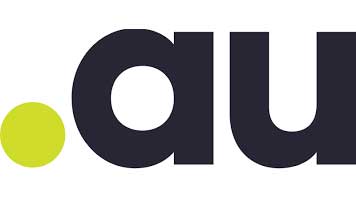Here’s a rewritten version of the article with a more polished, reader-friendly tone while preserving the original content and structure:
—

New to domain management? Don’t worry—we’ve got you covered. In this beginner-friendly guide, we’ll explain what domain management is, why it’s important, and offer practical tips to help you take control of your online presence.
What Is Domain Management, Really?
Think of your domain name as your digital address—it’s how people find you online. But just like managing a physical property, there’s more to it than just owning the address.
Domain management is the process of keeping your domain name secure, functional, and properly configured. It includes tasks like renewing your domain, updating DNS settings, and protecting your information. It’s all about making sure your domain works for you, not against you.
Understanding Web Domains
Before we dive deeper, let’s clarify what a domain actually is.
A domain name is the web address people type into their browser to visit your site—like www.yourwebsite.com. It’s unique to you and connects users to your website’s server through the Domain Name System (DNS). Behind the scenes, it translates to an IP address that browsers use to locate your site.
Who’s in Charge of Domain Names?
You can’t just claim a domain name and call it yours—there’s a global system in place to manage domain registrations.
At the top is ICANN (Internet Corporation for Assigned Names and Numbers), the organization that oversees the domain name system. Under ICANN, registries manage top-level domains (TLDs) like .com, .net, or .uk. You, however, will typically deal with a domain registrar—a company accredited by ICANN to sell and manage domain names on your behalf.
Registrars handle the technical aspects, like communicating with registries and updating DNS records. They’re your go-to for all domain management tasks.
How Domain Management Works
Registering a domain is simple. You choose a name, provide your contact details, and select a registration period (usually one or more years). Once registered, you’ll gain access to a control panel where you can manage everything.
Key tasks in domain management include:
1. Renewing your domain before it expires
2. Configuring DNS settings to point to your website or email server
3. Enabling domain privacy to protect your personal info
4. Transferring your domain to another registrar if needed
5. Creating subdomains or redirects
6. Managing administrative and contact details
Most registrars offer user-friendly tools and customer support to help you through the process.
Why Domain Management Matters
Still wondering if domain management is worth your time? Absolutely. Here’s why:
– Keep Your Website Online: Miss a renewal deadline and your site could go dark.
– Protect Your Brand: Prevent others from registering similar domains that could confuse your audience or damage your reputation.
– Improve Security: Guard against domain hijacking, DNS attacks, and phishing scams.
– Save Time and Money: Avoid costly recovery fees or downtime by staying on top of renewals and configurations.
Common Domain Threats to Watch Out For
Neglecting domain management can open the door to several risks:
– Domain Expiration: Forget to renew, and someone else could claim your domain.
– Cybersquatting: Others may register similar domains to profit off your brand.
– DNS Hijacking: Hackers can redirect your traffic to malicious websites.
– Phishing: Fake websites with similar domains can trick users into sharing personal data.
– Transfer Issues: Poorly handled transfers can result in domain loss or downtime.
Domain Management vs. Hosting: What’s the Difference?
Hosting and domain management are two sides of the same coin—but they serve different purposes.
– Hosting refers to the storage and performance of your website.
– Domain management deals with your web address and how users reach your site.
Think of it like this: hosting is your website’s building, while your domain is the sign that helps people find it.
Here’s a quick comparison:
| Feature | Hosting | Domain Management |
|———————-|——————————————|——————————————–|
| Purpose | Stores your website files | Manages your domain name and DNS settings |
| Affects | Site performance and uptime | Site accessibility and brand visibility |
| Provider | Hosting companies (e.g., Bluehost) | Domain registrars (e.g., OnlyDomains) |
| Renewal | Monthly or annually | Annually or multi-year |
| Transferability | Files can move to another host | Domains can be transferred to new registrars |
| Website Impact | No hosting = no website | Expired domain = inaccessible website |
| Essential For





